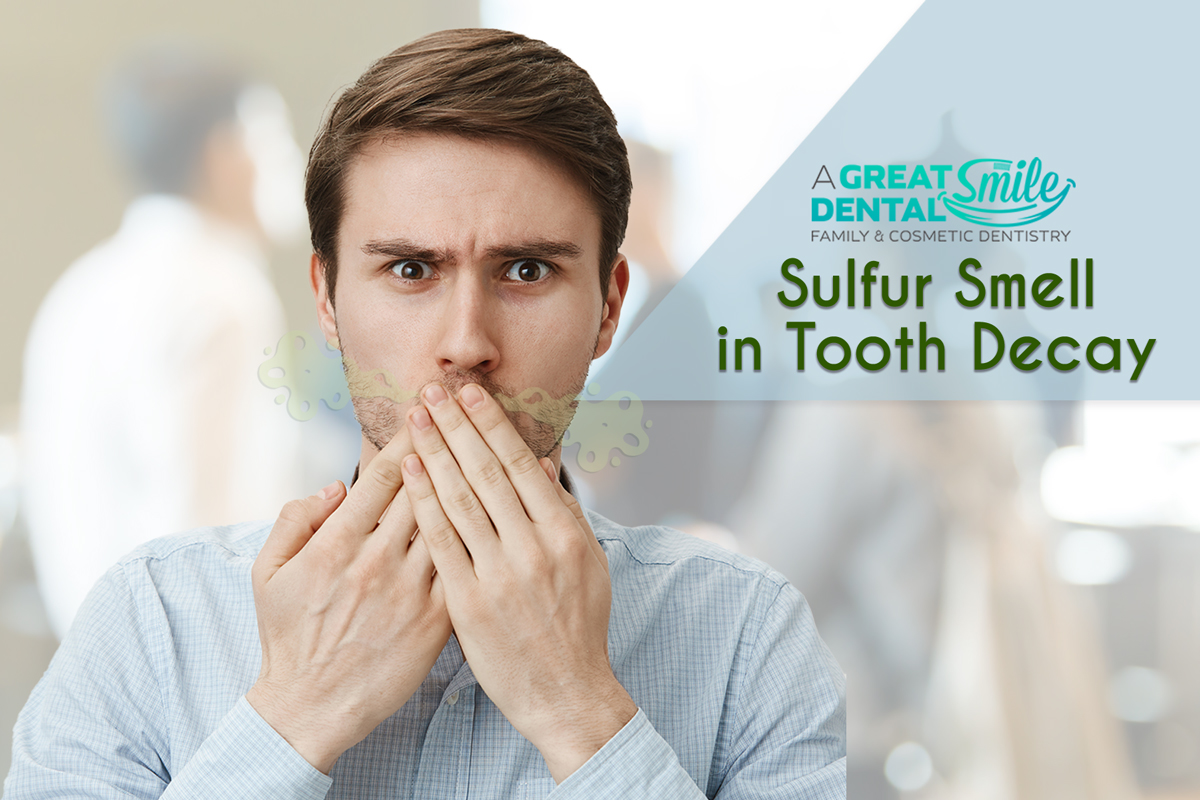A decaying tooth can produce some of the most unpleasant odors known, often surprising individuals with its strong, repulsive smell. But what exactly causes this offensive odor from a rotten tooth? Understanding the science behind tooth decay sheds light on this phenomenon.
Tooth decay begins when plaque, a sticky film of bacteria, builds up on the teeth. These bacteria break down the sugars and starches in our food, creating acids that gradually wear away the tooth enamel. This erosion leads to tiny holes that allow more bacteria to enter. As decay progresses, it can penetrate the deeper layers of the tooth, which contain blood vessels, nerves, and connective tissue. Once the infection reaches these inner layers, the tooth may ultimately die and emit a foul odor.
What triggers the foul smell of a rotten tooth? Several factors contribute to the unpleasant odor associated with severe tooth decay:
- Decaying Tooth Structure: As decay progresses, the tooth’s pulp tissue can die, decomposing and releasing sulfur-containing gases akin to the smell of rotting meat. This breakdown, fueled by sulfate-reducing bacteria, thrives in the low oxygen conditions within the tooth, generating hydrogen sulfide, methyl mercaptan, and dimethyl sulfide.
- Bacterial Activity: The mouth hosts numerous bacterial species, some pathogenic, contributing to dental issues like caries and periodontal disease. Anaerobic bacteria, flourishing in decayed teeth, metabolize dead tissue and emit malodorous metabolic byproducts. Species like Porphyromonas gingivalis and Treponema denticola produce sulfur compounds, while Fusobacterium nucleatum generates butyric acid.
- Food Particle Breakdown: Decayed teeth create deep crevices that ensnare food debris, allowing carbohydrates to ferment due to bacterial action. This fermentation process produces volatile sulfur compounds, foul-smelling acids, alcohols, and amines. The presence of tongue debris, saliva, and inflammation products further intensifies microbial putrefaction.
- Infection Drainage: Advanced decay with an exposed root canal can leak pus and fluid, contributing to bad taste and odor. Dead pulp tissue becomes a bacterial breeding ground, forming an infection and fistula tract. This tract discharges a mix of dead cells, food remnants, toxins, and microbes, intensifying the odor and potentially causing severe halitosis.
Understanding these contributors can help in addressing the underlying issues and treating the decay effectively to eliminate the odor and restore oral health.
The Impact of a Rotten Tooth Smell
Foul odors emanating from the mouth are a common prompt for people to seek dental care, yet living with the smell of a rotten tooth can have far-reaching social and health consequences:
- Social Isolation and Emotional Distress: The embarrassment of bad breath can lead to social withdrawal. Individuals with a rotten tooth may avoid close interactions to escape the embarrassment linked to their breath, potentially leading to anxiety, depression, or becoming socially withdrawn.
- Physical Discomfort and Nutritional Issues: The persistent foul taste and smell from an infected tooth can disrupt sleep and make eating difficult. This discomfort can disturb sleep patterns, causing fatigue and poor nutrition due to reduced food intake, which may lead to deficiencies in essential vitamins and minerals.
- Risk of Systemic Infection: Without intervention, bacteria and toxins from decayed teeth can infiltrate the bloodstream via infected pulp, potentially spreading throughout the body. This dissemination can lead to severe health issues, including fever, sepsis, arthritis, heart valve infections, and abscesses in various organs.
- Facial Swelling and Severe Infections: Dental abscesses stemming from tooth decay can induce notable swelling in facial, jaw, and neck regions, along with lymph node involvement. If the infection extends to adjacent areas, it may result in critical conditions like deep neck abscesses or mediastinitis.
- Tooth Loss and Associated Challenges: Progressed dental decay weakens teeth, heightening susceptibility to fractures. Substantial structural loss often necessitates tooth removal, presenting difficulties in nutrition, speech, bite alignment, and facial appearance.
In essence, the putrid odor emanating from a decaying tooth serves as a crucial indicator of underlying disease demanding prompt dental intervention. Failure to address the issue promptly can lead to further deterioration, excruciating discomfort, and the potential for severe, even life-threatening complications.
Diagnosing a Rotten Tooth: Methods Used by Dentists
Dentists employ various techniques to accurately diagnose a rotten tooth that may be causing bad breath. Here’s how they do it:
- Visual Exam: Dentists begin with a thorough visual inspection of the teeth, gums, and other oral tissues. They look for signs of decay such as holes, fractures, darkening, or structural breakdown, which help pinpoint the affected tooth. Visible signs of advanced caries may include fistulas and noticeable drainage.
- Palpation: Dentists utilize a periodontal probe to assess tenderness, bleeding, or purulent discharge around tooth roots, indicating infection.
- X-rays and Imaging: Intraoral x-rays, CT scans, and MRIs are crucial for revealing cavities and abscesses that are not visible to the naked eye, located deep within the teeth or jawbone. These images are vital for accurate diagnosis and treatment planning.
- Percussion Test: Dentists may tap on the teeth with a dental instrument to test for pain or discomfort. Increased sensitivity during this percussion test often signals inflammation or infection in the tooth pulp.
- Mobility Testing: Using metallic instruments to wiggle the teeth helps assess their stability. Increased looseness or mobility usually results from bone loss associated with infection and helps identify teeth that are problematic.
- Pulp Vitality Testing: This test assesses the health of the pulp nerves using methods such as electric pulp testing and temperature responsiveness (cold and heat). A lack of response can indicate pulp necrosis.
- Periodontal Probing: This involves measuring the pocket depths around the teeth. Deeper pockets may suggest bone loss due to infection.
- Microbiological Studies: Analyzing plaque samples under a microscope or through anaerobic cultures helps identify specific pathogenic bacteria responsible for tooth decay.
- Salivary Diagnostics: Testing saliva for various factors like pH levels, protein content, or biomarkers that are indicative of periodontal disease.
- Halitosis Measurement: Objective measurement of breath using devices like gas chromatography or OralChroma helps quantify the presence of volatile sulfur compounds, which are often linked to oral diseases.
By integrating findings from the patient’s history, physical examinations, imaging, and lab tests, dentists can accurately diagnose a rotten tooth, understand the underlying causes of the odor, and devise an effective treatment plan.
Frequently Asked Questions About Dental Odors
Q: Does a rotten baby tooth smell?
A: Yes, severely decayed baby teeth can emit foul odors due to pulp death and bacterial overgrowth, similar to what happens in permanent teeth. It’s important to seek urgent dental care to address the decay and prevent damage to the developing permanent teeth while maintaining the health of milk teeth until they naturally fall out.
Q: Can I brush or rinse away the rotten tooth smell?
A: While brushing, flossing, and using mouthwash may temporarily mask the odor, they cannot eliminate it. The unpleasant smell originates from the diseased tooth structure and internal infections, so proper dental treatment is necessary to permanently remove the source of the odor. Nevertheless, maintaining excellent oral hygiene can help limit bacterial growth.
Q: Should I take antibiotics for a rotten tooth smell?
A: Antibiotics should not be taken without a dental exam, diagnosis, and a prescription from a dentist. Misusing antibiotics can lead to increased resistance and other complications. Dentists will determine if antibiotic therapy is appropriate for a tooth infection. Although antibiotics might temporarily reduce odor, professional dental treatment is required for a long-term solution.
Q: Does a foul odor from a decaying tooth always indicate the need for extraction?
A: While a foul smell may suggest extraction, it’s not always the only solution. Your Las Vegas Great Smile dentist will assess factors like x-rays, probing, and clinical signs to determine if the tooth can be preserved through procedures like root canals or restorations. However, severely decayed or fractured teeth often require extraction to eradicate infection and associated odors.
Q: Why do wisdom teeth sometimes emit bad odors?
A: Bad odors from wisdom teeth often result from pericoronitis, an infection common when they are partially erupted or impacted. This allows bacteria and debris to accumulate easily around the wisdom teeth. Regular dental check-ups and potential preemptive removal of wisdom teeth can prevent such issues.
Q: Can dentures or implants develop a foul smell?
A: Absolutely, the emergence of malodorous scents can be attributed to conditions like denture stomatitis and peri-implant disease, wherein inflammation and bacterial proliferation occur around dental implant prosthetics, creating an environment conducive to unpleasant odors. Maintaining excellent oral hygiene practices and undergoing regular professional cleanings are essential to prevent these odors.

